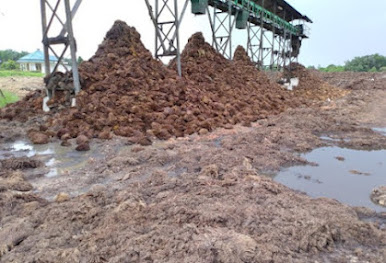The large number of ex-coal mines that are not reclaimed causes various environmental problems and even life safety. There have been many casualties from the former coal mine pit. The simple logic should be that after the coal deposit is taken or extracted during the mining activity, the land is returned and repaired so that the quality is better than before the mining activity or at least the same, but not worse so that various environmental problems arise. The era of decarbonization is accelerating because of the driving force of climate change and global warming. Fossil fuels, especially coal, are starting to be abandoned, of course, including the coal mining activity itself. Meanwhile, the area of former coal mines which reaches millions of hectares is a lot of environmental problems today.
When the quality of the soil is improved so that it has high fertility then this becomes a very extraordinary potential so that a number of important activities can be carried out, such as agriculture, animal husbandry and forestry. With such conditions, the effort to self-sufficiency or food sovereignty is not impossible. Technically, it can be analyzed which of the agricultural, livestock and forestry sectors can reach the goal faster, namely food independence or sovereignty. But before going far and doing business on the ex-mining land, to be more specific what products will be made, the basic question is how to improve the condition of the damaged soil and the scale is also massive?
The application of biochar to the soil is a surefire solution in an effort to repair damaged soils. Depending on how severe the damage is, the characteristics of the soil type and the final quality level being targeted will determine the application or dosage of the biochar. In addition to improving the soil, the biochar application also absorbs CO2 from the atmosphere, thereby reducing the concentration of CO2 from the atmosphere or is a carbon negative scenario. Biochar buried in the soil becomes a carbon sink, similar to creating a conservation forest to absorb CO2 from the atmosphere. How much biochar is buried so that it can be calculated that the CO2 absorbed into the carbon sink can be sold on the carbon market and get carbon credit. Biochar itself is able to last in the soil for hundreds of years and is not decomposed for a long time. Even when the land has been repaired with biochar and then a conservation forest is made on it, the carbon credit obtained are double, namely from the application of biochar itself and from the conservation forest. But once again, of course, economic factors are another important consideration, so as above, after soil fertility is improved with biochar, there are a number of options for using the land. Of course which one provides the best economic benefits will be the choice.
Millions of hectares of land can be recovered so that its benefits will be maximized. Say, for example, that one million hectares of land can be recovered and then used for activities that support food security or self-sufficiency such as agriculture and animal husbandry, then how much output can be calculated. Even better if there can be a surplus of food production so that it can export. Or even in the longer term, the land is reforested into conservation forest, so how much CO2 can be absorbed by the forest plus the application of biochar. Of course very much. Then why have to build a food estate but have to clear forest land, while there are other better ways? Namely not only restoring but improving the condition of the land even better before the coal mining activity was carried out.















